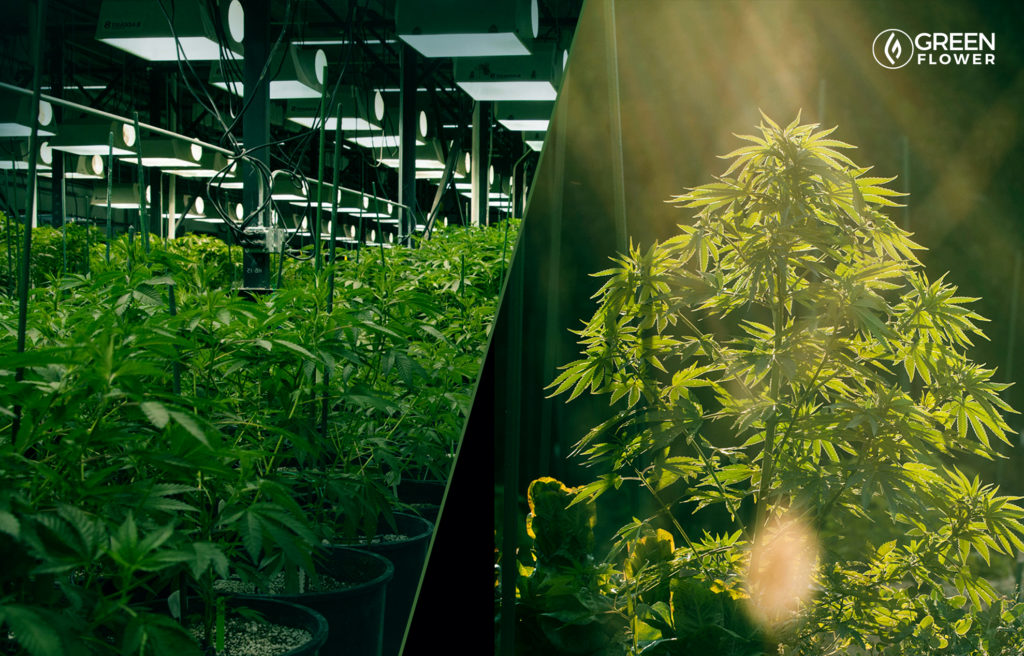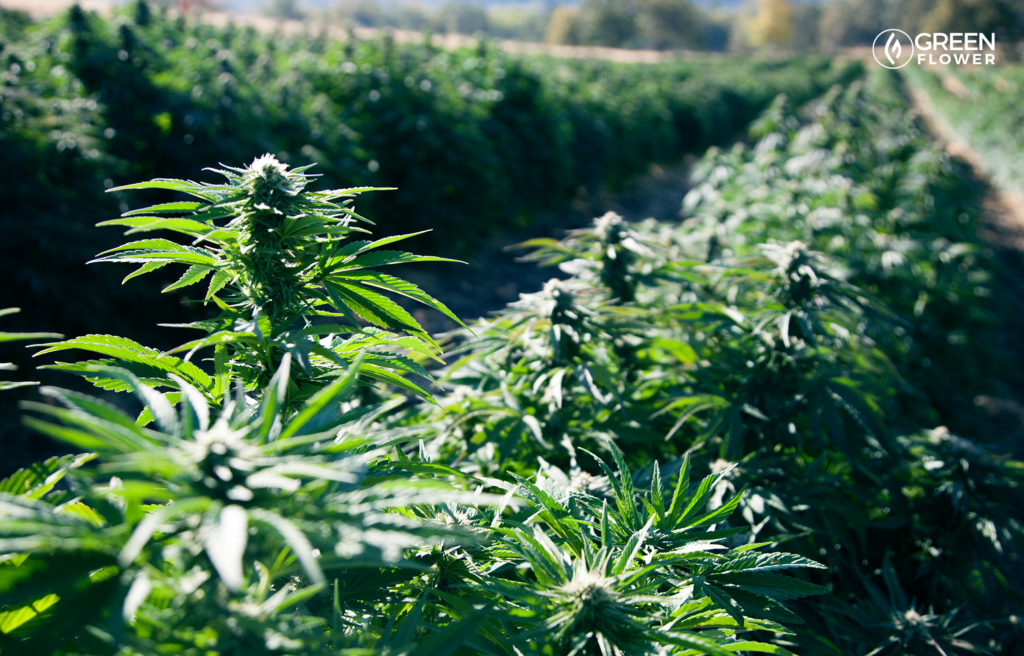Cultivating cannabis is a multi-step process. First, the grower has to germinate a seed or acquire a cannabis clone, then proceed to cultivate the plant through the vegetative stage, and then through the flowering stage.
If the cultivator can successfully care for the cannabis plant through those stages, then they face one of the most anxiety-inducing dilemmas in the cannabis cultivation process — when is it time to harvest the plant?
As a cannabis plant approaches maturity, the cannabinoids produced within the plant increase in potency. If a cannabis plant is harvested too early, the potency will not reach its full potential. Conversely, if a plant is harvested too late, the crop will not be as potent as it should be. Cultivators want to harvest when potency is at its highest (no pun intended), which is a somewhat short window of time. Determining when to harvest a cannabis plant can be nerve-racking, although it doesn’t have to be.
Knowing when to harvest a cannabis plant is fairly straightforward when you know what to look for. Virtually every healthy cannabis plant looks fantastic while it is growing, however, that doesn’t mean that it will automatically produce a quality crop when harvested. It is absolutely vital to harvest the plant at the right time, and doing so involves the consideration of various factors. We discuss those factors below, including the most objective and easiest ways to determine if your plant is ready to be harvested.

How Do You Know When The Cannabis Plant Is Ready To Harvest?
Many theories and strategies exist for determining when a cannabis plant is ready to harvest. Some people have a ratio of amber trichomes to clear trichomes they like to see. Trichomes are the shiny crystal-like things located on the leaves and “hairs” of the cannabis plant that you can barely see with the naked eye. When 20-50 percent of the trichomes have turned amber, some cultivators feel that the plant is ready to harvest. Unfortunately, that approach is not always accurate, or used by the most experienced growers. It’s worth noting that trichomes are secondary metabolites to the plant. Therefore, when the plant is ripe is not necessarily the same as when the trichomes are ripe. But unless you’ve had many successful harvests under your belt and know your genetics very well, trichomes are probably your best indicator to determine the ideal time to harvest your cannabis plants.
The best way to determine if a plant is ready to harvest is by looking at the trichomes using a hand-held magnifying glass (at least 40x), jeweler’s loupe, or digital microscope to view the trichomes’ color, shape, and density.
As a trichome is growing, it starts out as a spear shape and eventually develops a head, similar to a mushroom. When the trichome turns amber and has a “head,” it is ready for harvesting. Some cultivators prefer to see the trichomes bend a bit before harvesting, while others prefer that the plant is harvested when the trichomes are still rigid. The main thing is that the trichome has a head, and it is darker. If there is no head on the trichomes, the plant still has a ways to go, and if the trichome has bent to the point that the head has fallen off of the trichome, the plant has grown for too long.
Staggered Harvesting
If you successfully cultivate a plant to the point that the trichomes are becoming darker and developing heads on them, you will likely notice that not all of the trichomes on the plant look the same. The trichomes near the top of the plant typically become darker and develop heads faster than the trichomes toward the bottom of the plant.
Because of that common phenomenon, some cultivators prefer to stagger their harvests by cutting off the top layer of cannabis flowers and branches while leaving the rest of the plant in the grow medium to continue to develop.
By staggering the harvest it provides time for the trichomes on the lower branches to develop, increasing the potency of the overall harvest and the size of the harvest. It also provides the benefit of requiring less space to dry and cure, and helps keep cultivators within the legal dried-flower possession limits of the jurisdiction where the plants are located.
Some people will bemoan this technique, however, it’s worth pointing out that many other crops are harvested this way. For example, when tomatoes are harvested, most people only harvest the tomatoes that have changed to a darker color and leave the remaining tomatoes on the vine until they have also changed color. The same principle is applied to cannabis plants by some cannabis cultivators.
Genetic Guides Can Be Misleading
If you have ever purchased cannabis seeds or clones, chances are the seeds or clones were coupled with instructions for how long to grow them. The instructions typically measure the growth cycle in weeks, and are often interpreted by purchasers as being 100% accurate. Unfortunately, that’s not the case.
The estimated growth cycle can be helpful in providing a rough guess for how long the cultivator can expect the plant to take to mature, however, a one-size-fits-all growth cycle does not exist for any particular strain. A newbie grower is going to have a harder time cultivating a cannabis plant compared to an expert grower, and that will affect the actual curation of the growth cycle.
The quality of soil and light, climate, nutrients, and many other factors that vary from garden to garden will ultimately determine how long it takes a cannabis plant to grow. It’s a good idea to take any strain-specific growth cycle duration estimates with a grain of salt, and view them more as a suggested “what to expect” rather than an exact timeframe. Failing to do so could result in a plant being harvested too early or too late.

Cultivating Indoor vs Under The Sun
Cannabis that is cultivated under the sun will generally take longer than cannabis that is cultivated indoors under artificial light in a controlled environment. That is generally true even when the strain is the same, and the strain is grown in the same size container with the same soil and nutrients.
This is important to keep in mind because if a cultivator is researching strain info online, or in a book, or via marketing material, and following the exact guidelines from that research, it could result in the plant being harvested too early or too late depending on how the plant is being cultivated.
If a cultivator is using indoor lighting that is not very strong, it could take longer for their plants to be ready to harvest (assuming the plant gets to that point at all). If a cultivator is incorporating light deprivation methods into their outdoor garden, or they are using a sophisticated greenhouse with supplemental lighting, it can dramatically speed up the life cycle of a cannabis plant and directly affect the time period in which to properly harvest the plant to capture the highest level of THC.
Emergency Harvesting
Drastic times call for drastic measures. If you cultivate cannabis long enough, chances are you will run into a situation where waiting to harvest is not really an option. Perhaps you are moving, or you are cultivating cannabis outdoors and the weather is changing rapidly, or some other external factor creates a situation in which the plants must be harvested.
If that is your situation, it doesn’t automatically mean that the crop is ruined. It depends on how mature the cannabis plants are. If the plants have great trichome coverage, yet the trichomes have not turned darker and/or don’t have fully developed heads on them, you can likely still salvage the crop to some extent.
The harvest will not be as potent or abundant as it could have been had it grown for a longer period of time, however, it can still be useful to some extent. If the flower does not appear to be suitable for smoking or vaporizing, you might consider using it to make butter or oil for edibles or topicals. You can also use the material to make cannabis concentrates. If you choose to make concentrates at home, take all necessary safety precautions and use methods that do not involve volatile substances like butane.
If your plant has little to no trichomes on it, then it’s likely not potent enough to consume for euphoric-inducing purposes, even in edible form. With that being said, it still has some value because the cannabis plant is nutrient rich. You may consider juicing the cannabis leaves and softer branches so that the plant doesn’t go to waste.

Harder To Determine When Cultivating On A Large Scale
As with just about everything relating to cultivation, growing cannabis on a large scale creates challenges that aren’t typically a problem when cultivating one or two plants, and that is true for trying to determine when to harvest. At the most basic level, the more trichomes that a person has to look at, the longer it will take to determine if the garden’s plants are ripe. That same principle is obviously true for larger plants versus smaller plants.
Cultivators will want to keep this in mind when deciding how many plants to cultivate. If you are a cultivator who loves to look at trichomes all day, then this will not be a problem for you. However, if your time is limited or you don’t want to dedicate endless hours of looking through a hand-held microscope, you may want to consider scaling back your garden plans.
As previously touched on in this article, cultivators need to be mindful of the space required for the curing process. Knowing when to harvest cannabis is important, but so is having a suitable space to dry the cannabis after it is harvested. Planning ahead of time is very important to ensure that not only do you harvest your plants at the right time, but also that you successfully get them from harvest to a usable form.

